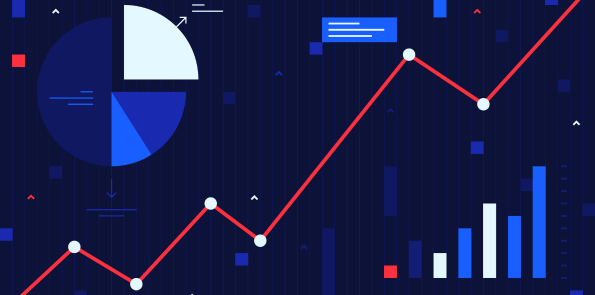Technical Analysis Made Simple: Boost Your Trading Skills

Обзоры рынка
Technical Analysis Made Simple: Boost Your Trading Skills
What is Technical Analysis?
In the world of trading, technical analysis is a powerful tool that helps traders make informed decisions by analyzing historical price and volume data. It is based on the belief that historical price patterns tend to repeat themselves and can be used to predict future price movements.
By studying charts, indicators, and patterns, technical analysts aim to identify trends, predict market reversals, and determine optimal entry and exit points for their trades.
The Basics of Technical Analysis
1. Candlestick Charts
Candlestick charts are the most commonly used type of chart in technical analysis. They provide valuable information about the price action during a specific time period, typically represented by a single candlestick.
A candlestick consists of a body and two wicks, representing the opening and closing prices, as well as the highest and lowest prices of the time period. The color of the body indicates whether the closing price was higher (usually green or white) or lower (usually red or black) than the opening price.
2. Support and Resistance Levels
Support and resistance levels are key concepts in technical analysis. Support levels represent areas where buying pressure is expected to outweigh selling pressure, causing prices to bounce back up. On the other hand, resistance levels indicate areas where selling pressure is expected to outweigh buying pressure, causing prices to reverse downwards.
Traders often use support and resistance levels to determine their entry and exit points. If a support level holds, they may consider buying, whereas if a resistance level holds, they may consider selling or shorting.
3. Trend Lines
Trend lines are lines drawn on a chart to represent the direction of the market's movement. An uptrend is formed by connecting a series of higher lows, while a downtrend is formed by connecting a series of lower highs.
Trend lines can help traders identify potential entry and exit points. Buying near an uptrend line or selling near a downtrend line increases the chances of catching a favorable price movement.
Common Technical Indicators
1. Moving Averages
Moving averages are lagging indicators that smooth out price data to identify trends over a specified period. They are calculated by averaging the prices over a certain number of periods, such as 10, 20, or 50.
The two most common types of moving averages are the simple moving average (SMA) and the exponential moving average (EMA). Traders use moving averages to identify trend reversals, support and resistance levels, and potential entry and exit points.
2. Relative Strength Index (RSI)
The Relative Strength Index (RSI) is a momentum oscillator that measures the speed and change of price movements. It ranges from 0 to 100 and is often used to identify overbought or oversold conditions in the market.
When the RSI surpasses 70, it is considered overbought, suggesting a potential reversal downwards. Conversely, when the RSI drops below 30, it is considered oversold, indicating a potential reversal upwards. Traders can use these signals to time their trades and take advantage of market inefficiencies.
3. Bollinger Bands
Bollinger Bands are volatility indicators that consist of a simple moving average and two standard deviation bands plotted above and below it. These bands expand and contract based on market volatility.
When the price touches the upper Bollinger Band, it is considered overbought, whereas when it touches the lower Bollinger Band, it is considered oversold. Traders often use Bollinger Bands to identify potential reversals when the price reaches these extreme levels.
Putting it All Together
Technical analysis is a versatile tool that can be combined with other forms of analysis, such as fundamental analysis, to enhance trading decisions. By understanding the basics of technical analysis and using common indicators, traders can boost their trading skills and increase their chances of success in the market.
Remember, technical analysis is not foolproof and should be used in conjunction with proper risk management and other forms of analysis. Developing a solid understanding of technical analysis takes time and practice, so don't be discouraged if you don't see immediate results. Keep learning, experimenting, and refining your skills to become a proficient technical analyst.
With dedication and practice, technical analysis can become a valuable tool in your trading arsenal, helping you identify profitable opportunities and navigate the complexities of the financial markets.


